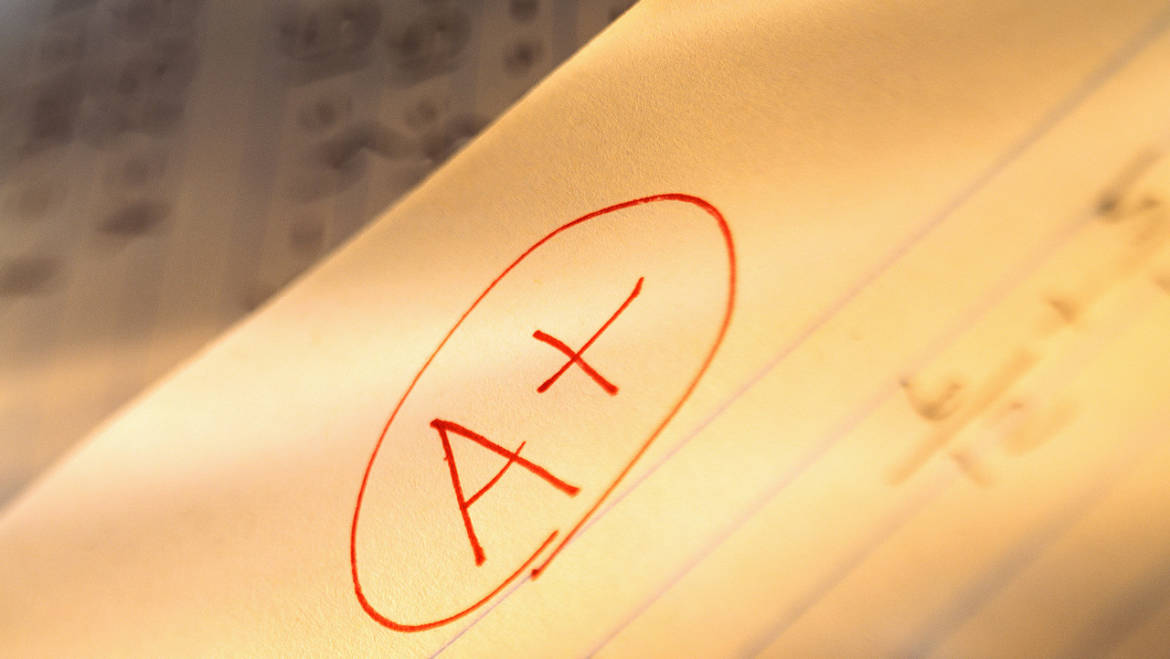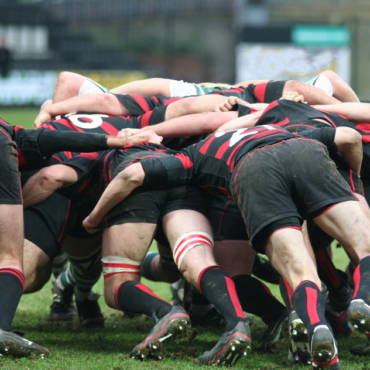A renowned swimming coach was walking up and down the side of the pool working with a world record holder. A younger, relatively inexperienced coach who was eager to learn, asked, “How do you know how your swimmer is going?” “How do you know when she is ready to do her best?”
The senior coach replied, “I just know”.
Testing does not replace the skilled eye or instinctual feel of an experienced and talented coach. It aims to provide measurement and objectivity to some of the elements of performance that coaches “see” and “feel” and “know”.
This article discusses some of the current issues in the testing of high performance athletes and looks at the crucial aspects of the measurement and evaluation of elite sports performance.
The testing process: Not a one off event!
Testing is not a one off event – it is a process that begins and ends with a test.
The testing process sequence includes:
- Coach determines the need for testing and discusses the test protocols with a sports science / sports medicine professional.
- Testing is scheduled and logistics, equipment, personnel etc. are organized.
- Pre test athlete education session organized (if appropriate).
- Testing is conducted.
- Results and data collected, collated and managed.
- Results and data evaluated.
- Results and data discussed with coach and athlete.
- Coach considers results and data and makes training program decisions based on the information.
- The next test date is scheduled.
- Athlete is retested to determine progress.
- Process repeats!
Testing is a useful coaching tool but it is one part of the overall process of athlete preparation and development.
Competition based testing
Of course, the best form of testing for high performance athletes in elite sporting programs is competition.
Competition provides the unique combination of factors that are only found on the pitch, on the track, on the court, in the pool or on the water during actual games and events.
However it is often difficult for the coach to be effective in competition based testing as he / she is focused on observing the athlete in competition conditions and perhaps even making strategic / tactical decisions based on those observations.
Therefore, it is essential that the coach identifies a reliable, experienced support team of professionals who can manage the details of competition based testing leaving the coach free to coach.
After the competition or perhaps even during rest periods, the support team can provide the coach and athlete with the detailed analysis of the performance and together work towards a strategy to improve competition results.
Success in Competitive Sport: Defined
The obvious measurement of success in competitive sport is winning!
However what is winning? It is said that the person who aims at nothing is sure to hit it! Therefore before designing a testing program, it is important to try and ascertain what coaches are trying to “hit” – what are they trying to achieve?
Successful competitive sport could be described as:
“The ability to maintain excellence in skills and consistently make the right decisions at high speed, while fatigued and in pressure situations” – Skills plus speed and decision making under fatigue and under pressure.
Winning often comes down to the players’ / athletes’ ability to perform basic skills effectively when they are tired and under pressure.
From this simple definition, it is possible to develop and effective testing program.
Why Test?
There are many reasons why a coach would want to test an athlete.
Once training and competition goals have been clearly established, a coach would test athletes:
- To provide information and feedback on the progress of the training / preparation of the athlete. Are we on track to achieve our goals?
- To provide information on specific elements of the athlete’s capacities and abilities. Is the athlete developing and improving?
- To determine areas of weakness or limitation: Are there problem areas or issues that need to be overcome?
How to Test
The perfect test is one where the athlete is accurately evaluated in the precise conditions likely to be experienced in competition and the results of the test directly relate to competition performances.
This is invariably difficult to achieve as there are numerous factors experienced in competition which are near to impossible to replicate in a training or testing environment.
For example:
How do you measure a goal kicker’s ability to kick a goal under game pressure when the only time they face game pressure is during a game?
How do you know if your players can execute attacking moves against opposition in pressure situations when the only time they get to experience these conditions is against an opposition in the pressure of a game?
Game / event simulations can provide athletes with the opportunity to learn how to execute skills in competition “like” environments but even these practices lack the real pressure experienced in actual competition.
Typically, testing protocols and methods are single discipline perspectives of one element of performance, e.g. tests based on physiology or biomechanics or psychology or nutrition or medical. The challenge for the coach is to effectively manage this narrow perspective to gain an overall understanding of the athlete’s abilities and capacities at the time of testing.
Who to Test?
Practically any athlete can be tested. Even young athletes can be tested for skill development and technical progress.
Young athletes can also be educated on how to develop the skills necessary to perform the testing protocols they are likely to experience as senior athletes.
For example, many tests require the ability to accurately maintain a precise speed, power output, pace or time. These skills can be taught to relatively young athletes as part of their development process and to prepare them to complete senior testing protocols as they mature.
Where to Test?
Field or Laboratory – the toughest question in the testing puzzle. Both have advantages and disadvantages.
Field testing can be simple, easy, inexpensive and meaningful to the coach and athlete but can be difficult to control owing to environmental factors and a wide range of other complicating variables experienced in the training and competition setting.
Laboratory testing is often expensive, requires complex equipment and trained personnel to operate it and in many cases has the considerable challenge of making the test results meaningful and specific to the actual sports environment.
Tests for oxygen exchange dynamics (e.g. VO2 max) have generally been performed in laboratories as the availability of precision equipment allows for more accurate testing. However, the limitation in laboratory testing is in the capacity to reproduce actual sports specific training and competition conditions.
For example, the measurement of VO2 max on a treadmill, cycle ergo-meter or rowing machine in the lab is based on well established testing protocols. However, the lab cannot exactly reproduce the external environmental factors (run and bike – road conditions, weather, hills, wind resistance: rowing – water conditions, current, weather, wind, boat friction / water resistance) that athletes experience in training and playing.
A useful field test alternative to lab based endurance testing is the shuttle run or “beep” test.
In football for example, laboratory based VO2 max tests are of questionable value as it is rare that any player runs at high speed (without the ball) in a single direction for sustained periods of time without the added complication of dealing with opposition players. However, the lab based VO2 test may offer a useful measure of the underlying fitness characteristics of the player and perhaps provide an indication of their injury/illness status.
In the end, a combination of regular field based testing (because of the practical, easy and immediate nature of the testing) together with occasional laboratory testing (because of accuracy, reliability and quality) is a good option for most sports.
What to test?
Selecting what to test for is a complex issue for every coach. Universities and other professional organizations can provide the coach with a “lolly shop” of tests and toys all with the promise of quick easy solutions to performance challenges.
One of the biggest problems for coaches is that many do not clearly identify what it is they want to test. As a result, when a sports science professional suggests what is possible, the coaches respond like the kid in “lolly shop” and want a little of everything.
Deciding what to test starts with a simple philosophical question for every coach:
“What do I believe are the key determinants of successful performance in my sport?”
In all sports, successful competition performance is determined by the effectiveness of the coach and athlete to optimise their preparation in four key areas:
- Physical
- Mental
- Technical
- Tactical
For example, as a coach of marathon runners you decide that the key determinants for success in your sport are oxygen exchange dynamics and biomechanical efficiency at 80-90% of maximum speed. Once you have made this philosophical decision, finding the right tests to evaluate the athletes is relatively easy.
As a coach of a football team, your philosophy may be that the best players are skillful at high speed. Again the choice of tests is a simple matter once you have decided what you want to look for.
Another advantage of establishing your own testing philosophy is that “unless you stand for something, you will fall for anything”.
Sometimes coaches fall for promises of magic pills and quick fixes from sports science professionals looking for subjects for a study or research project. The testing program should be a reflection of and consistent with the overall goals and philosophies of the coach, athlete and training program.
When to test?
Effective testing can be done at any time during the training or competition program depending on what you are looking for. Tests of maximum capacity or peak abilities are generally best performed when the athlete is rested and unfatigued. Traditionally this has meant testing during or at the end of a rest or recovery microcycle.
Ideally, testing should be scheduled during each phase of training: pre season, mid season and late season to provide feedback on the athlete’s progress throughout the training program.
However, if you as a coach have determined that you would like to assess the impact of physiological fatigue on skill and speed, then testing tired athletes is consistent with your overall program philosophy.
Summary: The Ten Golden Rules of Testing for Coaches
- Test for things that make sense. Testing VO2 max in lawn bowlers is not logical.
- Test because you believe it will make a difference. Just testing for testing’s sake or because the equipment is available is not the most effective use of training time.
- Test with a performance focused goal. Test elements of performance that you believe will make a direct impact on performance. Try not to get trapped in testing just to try and get a progressively better test result unless it is directly related to actual competition performance or the development of more effective training protocols.
- Don’t ask for a single test – ask for a series. If you make the commitment to be involved in a testing program, ask for more than one test. One off tests rarely tell the whole story.
- If you are working with sports science / sports medicine professionals, request that any test results are provided within 24 hours and that the professional allocates time to explain the results and their relevance to your program. This applies particularly if you have agreed to allow your athletes to be involved in a research project.
- Think multi disciplinary. If the athletes are being tested through lactate analysis, also measure and observe technical changes to assess the impact of fatigue on technique and skills. If they are being evaluated using heart rate, note speed, technique and if possible assess psychological skills at the same time. Performance is multi disciplinary in nature – testing is generally single discipline in focus. Coaches need to see the wider picture.
- Be visionary. If you as the coach see the need for a test to evaluate an element of performance which you believe is crucial to the success of the athlete, develop your own test! Ask a sports science / sports medicine professional to help you with the measurement side of things, but many great coaches use simple field tests that are meaningful to them but which may lack absolute scientific validity. Many scientific tests were originally ideas inspired by visionary coaches.
- Keep records. Try to record all test results. Have assistant coaches, parents of athletes, injured players, reserve team players – anyone – trained to record (accurately) test results.
- Measure what is measurable, control what is controllable, what can be measured and controlled is likely to be meaningful.
- Take time to educate athletes about testing. In time, senior athletes can learn to do some or most testing protocols themselves. Athletes can learn to monitor their own heart rates, take their own times, count their strides, record their feelings…..and the better educated your athletes are to self manage / self monitor their own testing, the more meaningful the results are to them. Having educated athletes who can self monitor means the coach has the freedom to coach, observe and learn during the testing process.
As it is with your overall program, testing is athlete-focused and coach-driven. Manage the testing process so that you can provide your athletes with the best possible opportunity to achieve their performance goals.
Wayne Goldsmith



